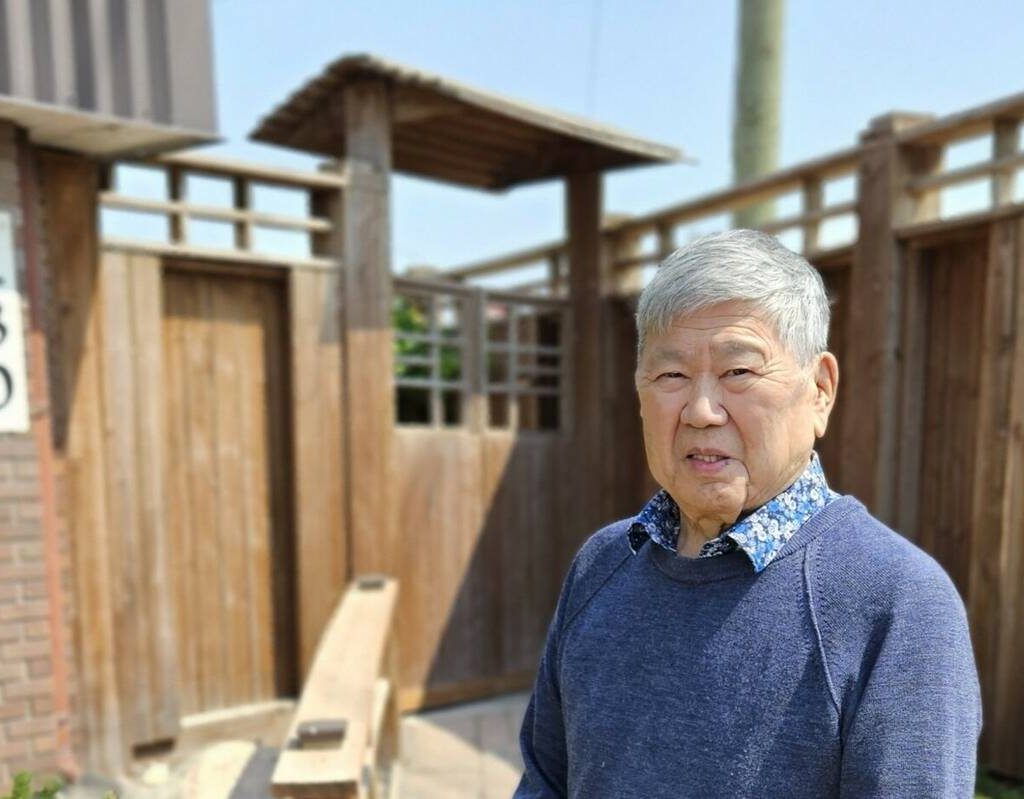The forced Japanese-Canadian farmers of the Second World War
| 8 min read

Art Miki’s family was removed from B.C. to a Manitoba sugar beet farm in 1942. Today, Miki is an Order of Canada and Order of Manitoba recipient and the author of Gaman - Perserverance. Photo: Supplied
Canadian sugar beet farms drew labour from displaced Japanese-Canadians from B.C. during the Second World War
You should probably sell your farm, the United Church minister told Tokusaburo and Yoshi Ooto.
The couple had lived in British Columbia for nearly 40 years. They, along with their daughter, son-in-law and grandkids, made their living on their seven-acre farm growing fruit and berries in Haney — present-day Maple Ridge.
That was before the Second World War though, and things were about to change.
Why it matters: Anti-Japanese sentiment in the Second World War led to thousands of Canadian citizens or immigrants of Japanese descent being displaced or put in internment camps.
In February 1942, the Canadian government passed an order-in-council to remove all people of Japanese ancestry from within 100 miles of the B.C. coast.
It was a couple months after the Japanese attack on Pearl Harbor, and Canada was afraid it was next.
It didn’t matter that the Ootos were naturalized citizens, or that their children and grandchildren were born in Canada. It also didn’t matter that neither the RCMP or top-ranking military officials were concerned about Japanese Canadians’ loyalties.
They had to leave — either for internment and work camps in B.C. and Ontario, or for sugar beet farms in Manitoba and Alberta.
The federal government told Japanese Canadians their land and property would be held in trust, but the church minister told the Ooto family the war would probably last another four or five years. They should sell the farm rather than let it be confiscated, he advised.
There wasn’t much time to put the farm on the market. Tokusaburo settled for $2,500 (about $46,850 in 2025 dollars, according to the Bank of Canada’s calculator) for his business and land, wrote Art Miki in his memoir, Gaman — Perseverance.
The author, who is the Ooto’s grandson, was five-years-old when his family and grandparents boarded a cramped train bound for Manitoba.
Tokusaburo would never see his farm again.
The beet farmers
Manitoba’s sugar industry had a problem in the early 1940s. The federal government, its war economy in full swing, wanted to maximize sugar production but farmers were reluctant. Sugar beet prices were low and labour was short.
“Prior to the advent of mechanization, sugar beet production was a large consumer of hand labour,” wrote John Friesen in his 1962 geographical study of the Manitoba sugar beet industry.
“As much as 70 to 80 hours of hand labour were required to produce one acre of sugar beets.”
That included hoeing, thinning and weeding in spring and chopping the tops off beets and loading them at harvest—though at the beginning of the war, a mechanical loader was available.
The Manitoba Sugar Beet Growers Association approached the B.C. Security Commission (BCSC), which was charged with moving Japanese-Canadians out of the exclusion zone, wrote Louis Dion in a 1991 thesis.
The association suggested that Japanese-Canadian families with agricultural experience could fill the labour gap on Manitoba beet farms.
While the security commission initially suggested a trial run with 20 to 25 families, that strategy soon dissolved in the haste to resettle Japanese-Canadians. The first 20 families arrived in Winnipeg in April of 1942. Within a week, 44 families had been sent, Dion wrote.
For Miki’s family, traveling to Manitoba meant a chance to stay together.
“My mother was pregnant at the time, and if you went to an internment camp, the families were separated,” Miki said in an interview. “The men were usually taken away to work camps in the interior of B.C.”
His parents, siblings and grandparents arrived in Manitoba in May 1942, where they were paired with the Lemoine family, who farmed near Ste. Agathe, a French-Canadian community south of Winnipeg.

Art Miki’s family on the sugar beet farm near Ste. Agathe in 1942. Photo: Supplied
“The first we lived in a house out in the field,” Miki said. “Unfortunately, the houses were not very well insulated. There was no water or electricity and it was really cold.”
The next year, the family moved into a house in Ste. Agathe.
While the security commission had told farmers they were required to provide good housing and sanitation, the hasty manner in which the families arrived and the chaotic nature of the entire enterprise meant guidelines were rarely enforced.
At a Headingly farm, four families were housed in a converted cattle barn.
“The barn-house was dirty and insulated with manure piled to the windowsills,” Dion said.
The work was hard — harder than berry farming, Miki said. For their efforts, his family members were paid 25 cents an hour, the equivalent of $4.68 today.
Hard times
Poor weather plagued the harvest of 1942 and by October, 100,000 tons of an expected 130,000-ton harvest were still in the fields, Dion wrote. Growers brought in more labourers from schools and Winnipeg to harvest the crop, but for every acre these workers picked, the Japanese-Canadian families lost wages.
The families were expected to pay for their living expenses from their wages, but it became clear that the seasonal work wasn’t going to be sufficient to live on. The security commission was forced to look for winter employment for the Japanese-Canadians.
By June 1943, 23 per cent of the families required financial aid to meet their daily needs.
“Expenditures beyond food, shelter, heating and clothing bankrupted many families,” Dion wrote.
Faced with poor living conditions and financial ruin, Japanese-Canadians began to filter into Winnipeg, despite many lacking permission to do so, looking for better work and housing.
This was the eventual fate of Miki’s family. Proceeds from the sale of their farm were spent keeping the family afloat. Eventually, his father got permission to work in Winnipeg and took a job as a machinist.
“The Japanese had to pay for their own internment,” Miki said.
When the government eventually sold the Japanese-Canadians’ land, any expenses for the families’ removal from the province were deducted from the revenue.
“You ended up paying for being incarcerated in a sense,” said Miki. “Most Japanese ended up with nothing.”
The aftermath
Japanese-Canadians hadn’t been treated as equals before the war. The population, which was concentrated on Canada’s West Coast, was largely barred from voting by B.C. law, a rule upheld by the federal government.
When they were relocated from B.C., Japanese-Canadians technically gained the right to vote, but the federal government quickly closed that loophole, according to an Elections Canada article. They did not unconditionally gain the right to vote until 1948.
In Manitoba, while a group of Japanese-Canadian community advocates negotiated better wages for those working on beet farms, families continued to trickle into Winnipeg in search of better living conditions, but were often met with suspicion.
“Getting a job was difficult,” Miki said. “You have to remember that the Japanese, a lot of them, couldn’t go into the professions.”
Pre-war, he noted, they couldn’t become engineers, lawyers or teachers in B.C., and most had work in the fishing, farming or lumber industry.
In Manitoba to stay
Most Japanese-Canadians weren’t able to go back to B.C. after the war.
The Miki family settled in East Kildonan, then a predominantly Mennonite community and not part of the City of Winnipeg. They got busy getting back on their feet. Miki’s mother, who had never worked outside the home before, got a job in a tannery, and both parents worked long hours. Neither spoke about their forcible relocation or being treated as traitors in their own country, he recalled.
“I think it was humiliation they had to face,” he said.
“I know that in my community, many of the younger people found out after, once we got into the redress movement and the apology and so on. But up to then, they didn’t know.”
Japanese-Canadians kept their heads down and tried to blend in, Miki said.
“I mean, I don’t speak Japanese. That was discouraged, after to even be Japanese, never mind speak it,” he said. “We grew up thinking we’ve got to be like other people, and so you begin to lose the feeling of culture and who you are.”
Redress
In a September 1988 news photo, Art Miki sits beside Brian Mulroney, looking on as the then-prime minister signs an agreement apologizing for the wrong done to Japanese-Canadians and providing $300 million in financial redress.
Miki called it “a settlement that heals,” CBC reported in a 2018 article.
He’d become an elementary school teacher and principal, a community leader, and as president of the National Association of Japanese Canadians a leader of the movement to seek redress.
He pointed to the sacrifices his parents’ generation had made to ensure their kids went to school and to instill the importance of education in their kids. A very high proportion of Japanese-Canadians are now university graduates, he noted.
“The Japanese community has done well,” Miki said.
The end of Manitoba sugar beets
In 1997, Rogers Sugar announced the closure of its Winnipeg plant, which had been in operation since 1940. The Winnipeg plant had sold more than half of its 50,000-tonne production into the lucrative U.S. market until that country set a 22,000-tonne quota on sugar imports. The company was also facing greater domestic condition.
Manitoba hasn’t produced sugar in more than 20 years.


